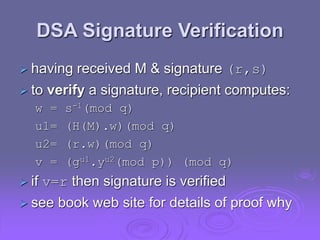This document discusses digital signatures and authentication protocols. It describes the properties of digital signatures, such as being dependent on the message signed and using unique sender information. It also covers direct digital signatures, arbitrated signatures, authentication protocols, replay attacks, and the Digital Signature Algorithm (DSA) and Digital Signature Standard (DSS).
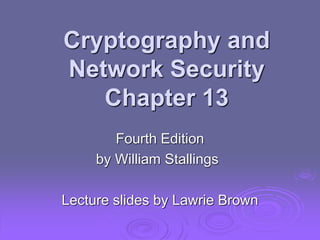
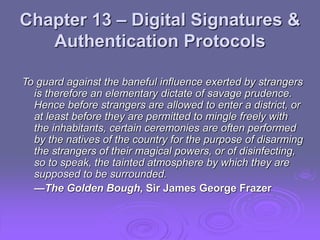
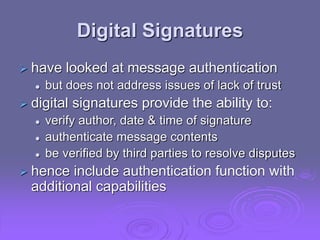


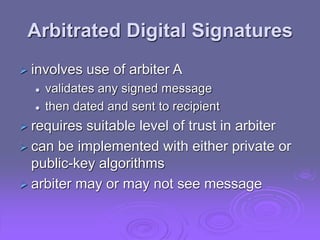
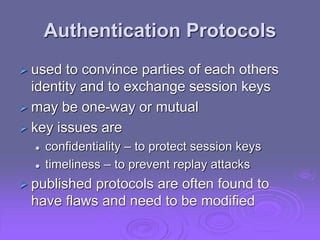
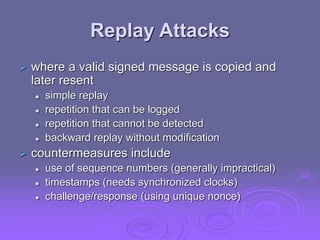
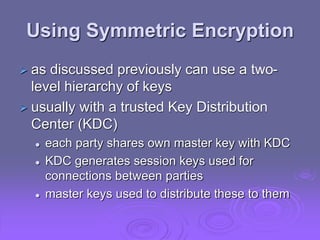
![Needham-Schroeder Protocol
original third-party key distribution protocol
for session between A B mediated by KDC
protocol overview is:
1. A->KDC: IDA || IDB || N1
2. KDC -> A: EKa[Ks || IDB || N1 || EKb[Ks||IDA] ]
3. A -> B: EKb[Ks||IDA]
4. B -> A: EKs[N2]
5. A -> B: EKs[f(N2)]](https://image.slidesharecdn.com/ch13-221104150911-ec42a122/85/ch13-ppt-10-320.jpg)

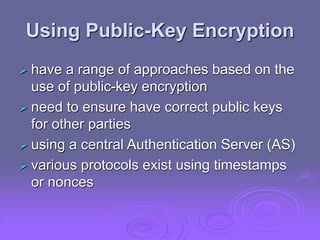
![Denning AS Protocol
Denning 81 presented the following:
1. A -> AS: IDA || IDB
2. AS -> A: EPRas[IDA||PUa||T] || EPRas[IDB||PUb||T]
3. A -> B: EPRas[IDA||PUa||T] || EPRas[IDB||PUb||T] ||
EPUb[EPRas[Ks||T]]
note session key is chosen by A, hence AS need
not be trusted to protect it
timestamps prevent replay but require
synchronized clocks](https://image.slidesharecdn.com/ch13-221104150911-ec42a122/85/ch13-ppt-13-320.jpg)

![Using Symmetric Encryption
can refine use of KDC but can’t have final
exchange of nonces, vis:
1. A->KDC: IDA || IDB || N1
2. KDC -> A: EKa[Ks || IDB || N1 || EKb[Ks||IDA] ]
3. A -> B: EKb[Ks||IDA] || EKs[M]
does not protect against replays
could rely on timestamp in message, though
email delays make this problematic](https://image.slidesharecdn.com/ch13-221104150911-ec42a122/85/ch13-ppt-15-320.jpg)
![Public-Key Approaches
have seen some public-key approaches
if confidentiality is major concern, can use:
A->B: EPUb[Ks] || EKs[M]
has encrypted session key, encrypted message
if authentication needed use a digital
signature with a digital certificate:
A->B: M || EPRa[H(M)] || EPRas[T||IDA||PUa]
with message, signature, certificate](https://image.slidesharecdn.com/ch13-221104150911-ec42a122/85/ch13-ppt-16-320.jpg)





